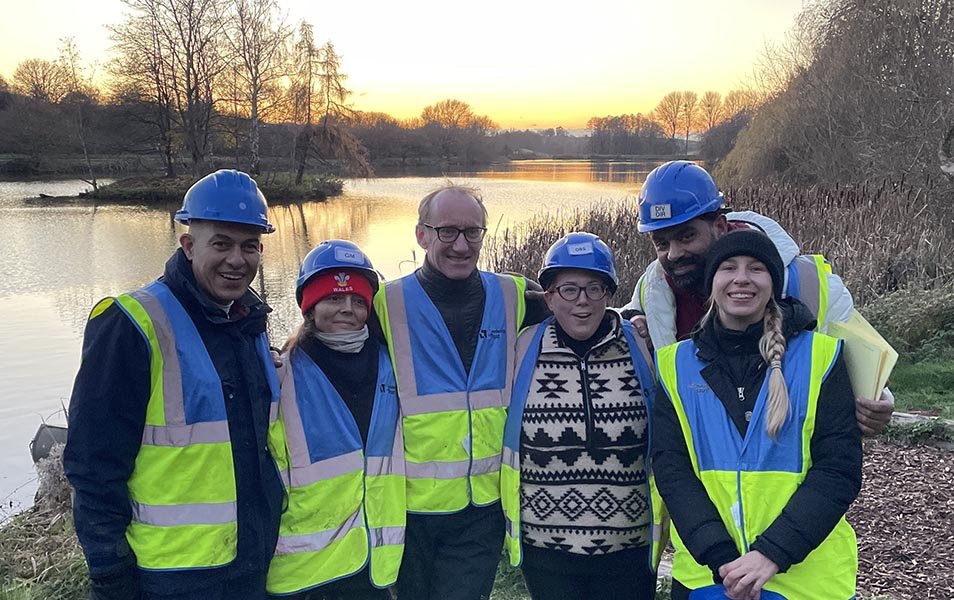
“My main passion is the customer — what they like, what they’re likely to like tomorrow, and how you can make it happen,” says Kim Winser, founder of fashion house Winser London. It’s an outlook fostered by decades at the top of her game; learning, as the saying goes, to give people what they want before they know they want it.

One of four siblings, Winser was born in Helensburgh, Scotland, to a Navy father and a bright, hardworking mother who taught her to “always be yourself”. She credits her parents for her “very good work ethic”. Kim’s entrepreneurial spirit emerged early on: “I was 16 and remember asking the manager of our local cinema if they had any deals going as I had 20 friends who wanted to go.” But just as interesting were her role models: “Bill Gates was one of my first inspirations,” she says. “I remember reading about this chap who got a maximum score in his SATs and then developed Microsoft straight out of Harvard.” Another influence was [Sir] Richard Branson, then setting up what would become Virgin Group. “I have always admired creativity coupled with knowing how to run a business.”
Retail Queen
In 1977 Kim had to make her first tough call: “I got an offer to join the Marks & Spencer (M&S) management training scheme in the same week as I received a letter offering me tennis coaching in America. I loved tennis but I knew I’d be crazy not to take the M&S place as it was the gold-topped scheme.”
With tennis on the back-burner, Winser plunged in, gaining business wisdom from an early age: “I was told in one appraisal that I was ‘a bit black and white’ and that sometimes ‘grey is worth investigating’. It was a good conversation.” Later Malcolm Gladwell’s Blink encouraged her to trust her instinct: “Combine ongoing insight with experience and gut instinct and you will probably make some very good decisions.”
In 1995 Kim was appointed director of womenswear, and went on to become the first female board director at M&S — former executive chairman Sir Stuart Rose famously called her “an iron fist in a velvet glove”. In 2000 she became CEO at Pringle of Scotland, and in 2006 was named president and CEO of Aquascutum, at the same time being honoured with an OBE for services to the fashion industry.
Rollercoaster Ride
However many great careers have their setbacks, and Kim’s came with a failed management buyout of Aquascutum in 2009. “That was my lowest point,” she says. “The owners went for the largest offer, which I understand but we could have done amazing things with the company.” The crucial thing for Kim was learning how to deal with such a crushing disappointment “I booked onto the next flight to Barbados with my son!” She smiles as she recalls how life then quickly took a different but crucial turn. “The MBO story made The Sunday Times front page that weekend. I was on a beach and Natalie Massenet rang asking me to join her at Net-a-Porter! The experience of working in a digitally led retail business was so helpful; sometimes these things are meant to be.” Kim launched her own label Winser London in 2013.
Kim acknowledges her career path is “the reverse way round to what a lot of people might have: a big corporate career from a young age which I absolutely loved, and then later in my career, launching a start-up which is so exciting.”
Interestingly Kim launched her business with a fresh new organisational structure: on setting up, she asked 10 people to join her part time. “The alternative was to have an enormous cost base, which I wasn’t willing to do. The 10 were all people I knew or I had met and they covered every aspect from design to logistics to finance. I then asked each of them to recruit somebody straight out of college or university. They are all experts in their field and the young people challenge them and keep them fresh.” And although the idea might have originally been born of necessity, Kim says her flexible and intergenerational structure has been key to Winser London’s agility and grow.

“Mixing experienced talent with young individuals has kept us very much on our toes — we can react to both younger people who are definitely buying from the social media as well as the traditional broadsheet customers who responding to reading about the quality of our products. Also, because we have been very comfortable from the start with people from all over the UK working remotely, we are used to being agile and responsive which has stood us in good stead as we grow. It’s a very modern business model. We’re built to be able to react to the consumer, to listen, learn and respond to her and that forces the whole structure of the company to be nimble, responsive and reactive.”
Future Planning
Running a business in today’s volatile world takes a finely tuned mixture of responsiveness and focus on the end goal. In the past two years Winser London has seen fantastic growth in surprising territories:
“We now have a lot of product going into the US and the next biggest market is Australia which was really surprising. I haven’t needed to change my strategy though — we were always building Winser London as a good export business as I believed that the gap [in womenswear] that exists in the UK, is also a gap in many other countries. What’s happened to us recently is that, with the combination of the fluctuating currency and social media getting stronger, the Winser word has spread quicker than we predicted. I have reviewed my strategy at times and or moved investment from one area into another in order to be responsive — I think that is really important.
“I sit on the board of The Hong Kong and Shanghai Hotels group and when we met the other week we talked about how today’s generation has information at their finger tips and can make decisions very quickly. If life is like that then business models have to reflect that. For example a customer may see Holly Willoughby wearing Winser London one morning and may want to wear it that weekend — I have to think how I respond to that. Equally how do you keep the business being reactive? Leaders have to respond to a strategy which could be faster or slower than planned while still keeping a very clear vision of what they want the business to do — you don’t want to be swinging your business strategy around.
“We live in a volatile world and there is danger at both ends — danger for big corporates who are slow to respond because there are so many layers involved in every decision and danger for the inexperienced entrepreneur who can misread the need to develop strategies and instead move to changing the vision all together. Both types of business need to be constantly driven by the customer group. I’m lucky I thrive on creativity and newness and the more I learn the more I enjoy it. If there is a problem I always try to innovate our way to a solution. There’s a lot of positivity running through the blood — and that’s essential for great leadership.”

Insight
Unlocking Leadership Potential: My Experience on the Residential Programme
"It’s hard to articulate the impact this residential course has on your personal growth and leadership development. The residential was...

Insight
Webinar: Competence Without Boundaries
To celebrate International Women's Day 2024, Leadership Trust CEO, Dr Léa Cléret, explores what immediate actions women can take to...
Learn more about Leadership Trust and how
we can help you and your organisation